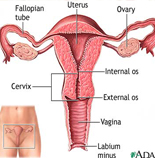Ultimate for Holistic Health.
<Visit ourYoga

This in itself is an Asana of Yoga, a variation of Yoga.
Our Services
Asthma, Spinal disorder, Digestive disorder Lack of sexual potentiality Weak glands and nervous system
Menstrual Disorders
Before going to menstrual disorders at first we must know a few words about menstruation.
The word menstruation is derived from the Greek word 'menmonth'. It is the periodic discharge of a bloody fluid from the uterus occurring in more or less regular interval (28 days) during the life of a woman from the age of puberty (menarchy) to menopause.

The menstrual cycle is divided into 4 phases characterized by histological changes that take place in the uterine endomentrium. They are:-
(i) Proliferative phase
(ii) Luteal or secretory phase
(iii) Premenstrual or Ischaemic phase
(iv) Menstruation
The menstrual disorders are of various types. They are:-
(A)Amenorrhoea:-
The symptom of absence of menstruation.
Causes:-
(a)Physiological:
During pregnancy
During lactation
Before puberty
After menopause
(b)Pathological:-
Disorders of menstrual outflow tract or uterus
Disorders of ovary
Disorders of anterior pituitary gland
Disorders of central nervous system
Environmental stress
Sex chromosomal anomaly
(B)Cryptomenorrhoea:-
This is the concealed menstruation.
Causes:-
(a)Congenital:-
Imperforate hymen
Transverse vaginal septum
OR
Atresia of lower end of vagina
(b)Acquired:-
Stenosis of the cervix after amputation, cautery.
Stenosis of the vagina due to obstretic or other
injuries
(C)Oligomenorrhoea:-
This means infrequent menses at intervals larger than 35 days.
Causes:-
Same as that of amenorrhoea.
(D)Hypomenorroea:-
This means scanty menstrual loss in duration and amount.
Causes:-
Taking of oral contraceptive pill may cause it.
(E)Dysmenorrhoea:-
Painful menstruation incapacitating the woman.
Causes:-
(a)(a)Primary:-
Obstruction due to pinhole or conical cervix
Inadequate uterine muscles
Ischaemia of uterine muscles
Psychological
Constitutional
Prostaglandin liberation
(b)Secondary:-
Interstitial or submucous fibroid
Intrauterine contraceptive device
Cervical stenosis
Pelvic inflammatory condition
Pelvic endometriosis
F)Metrorrhagia:-
This means intermenstrual irregular bleeding.
Causes:-
Following are the causes behind it:-
Carcinoma of cervix or endometrium
Uterine (mucous and submucous) fibroid
Dysfunctional uterine haemorrhage
Any ulcer on the cervix
Tuberculous endometritis
Post IUCD bleeding
(G)Menorrhagia:-
This means excessive menstrual loss in amount or duration or both causing more than 80 ml blood loss.
Causes:-
(a)Pelvic:-
Uterine fibroid
Pelvic inflammatory disease
Pelvic endometriosys
Endometrial hyperplasia and polyps
Ovarian tumour
Uterine malfunction
(b)Endocrinal disorders:-
Tonic oestrone and LH effect
Hypothyroidism
(c)General diseases:-
Chronic hypertension
Chronic congestive cardiac failure
Chronic nephritis
Hepatic dysfunction
Malnutrition
Severe anaemia, leukaemia
Emotional disturbances
Treatment:-
After diagnosis of the actual disease condition by proper case-taking, examining and investigating the blood, hormone, ultrasonography of the lower abdomen of the particular patient, the proper treatment starts. Treatment is done mainly according to the causation of the disorder.
Homoeopathic medicines:-
Here I am giving the name of some homoeopathic medicines which are usually prescribed in the case of this disease according to the physical signs and symptoms as usually observed in the case of this disease. However it must be borne in our mind that apart from the physical symptoms there are also some mental symptoms associated with this disease for which I have not mentioned any medicine here. Different medicines are used for different types of menstrual disorders. Here a few common medicines are given which are used for the above disorders according to symptoms and causations. They are as follows:-
(ii)Cocculus indicus
(iii)Cyclamen europaeum
(iv)Graphites
(v)Nux moschata
(vi)Pulsatilla nigricans, etc.
Yogapathic chart:-
Many asanas are essential for the above varieties of disorders. Among them a few asanas are effective such as:-
(i)Sasangasana
(ii)Matsyasana
(iii)Bhadrasana
(iv)Bhujangasana
(v)Sirshasana ,etc.
Except the above asanas few free hand exercises may be practiced which are also very helpful.
Except Sahaja Pranayama and Bhramana Pranayama all asanas, mudras and pranayamas are restricted during menstrual bleeding.
Meditation:-
One must meditate early in the morning and before going to bed on Sukhasana or Vajrasana for 20 to 30 minutes. Each time one should concentrate the mind on the lower abdomen.
Diet chart:-
Here diet restriction is not very important. Yet if you can maintain few food habits you will get an extra advantage to become healthy.

Take whey at noon
Take milk at night
Take milk from coconut
Take milk from groundnut
Take green vegetables
Take sweet and sour fruits
Take plenty of drinking water
Avoid meat, fish and egg
Avoid rich and spicy foods





 Benefits of Suraha
Benefits of Suraha